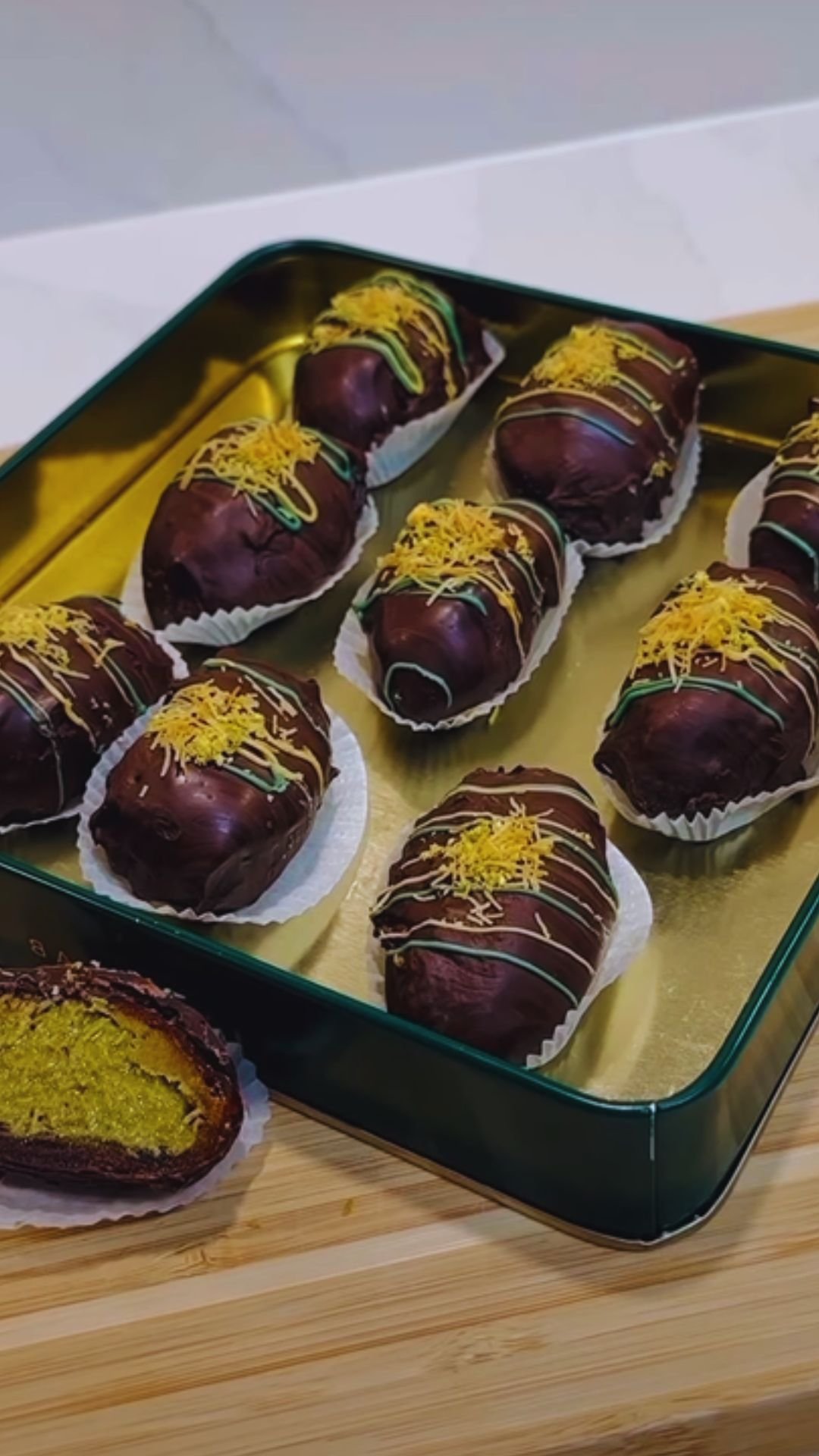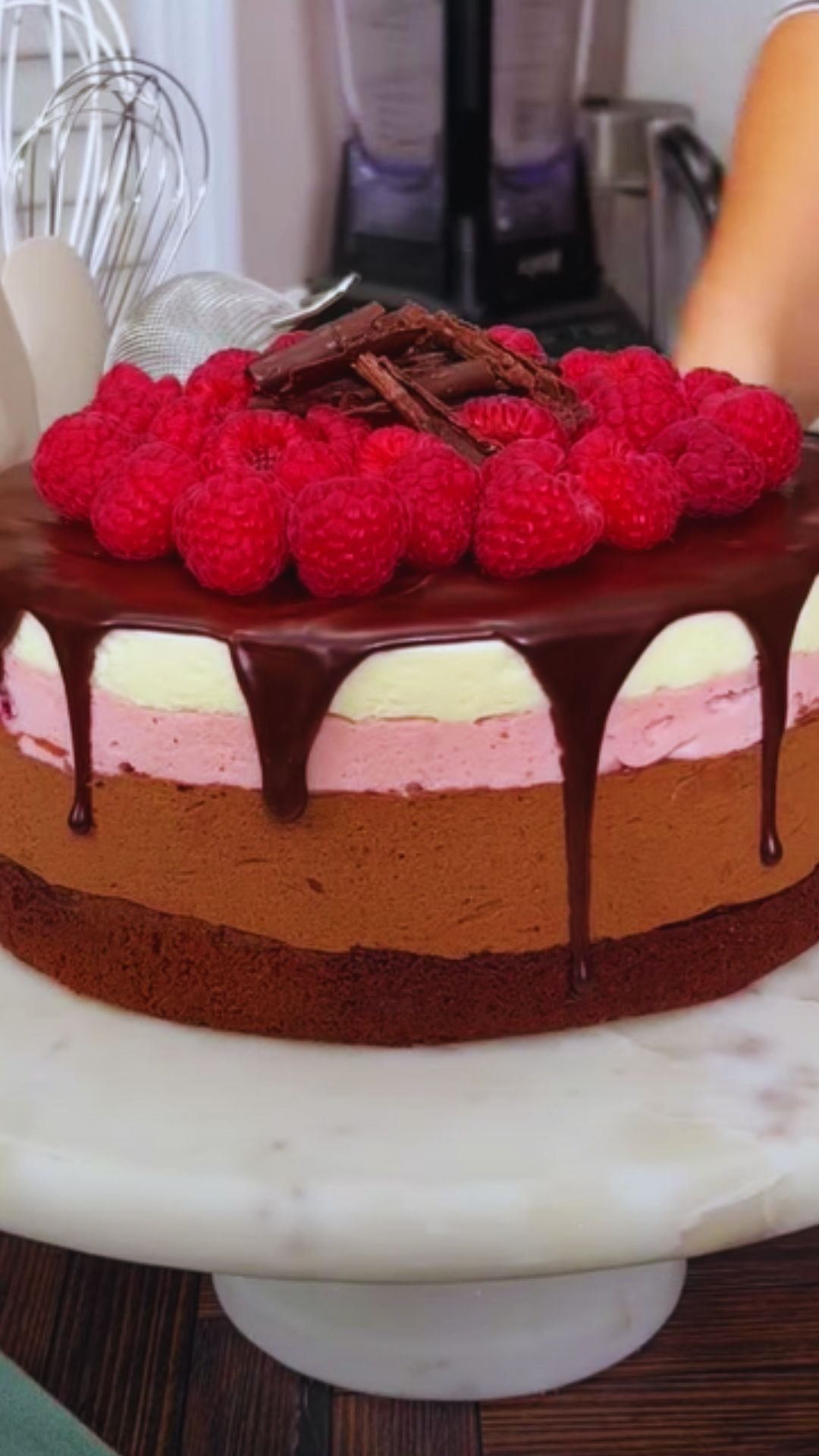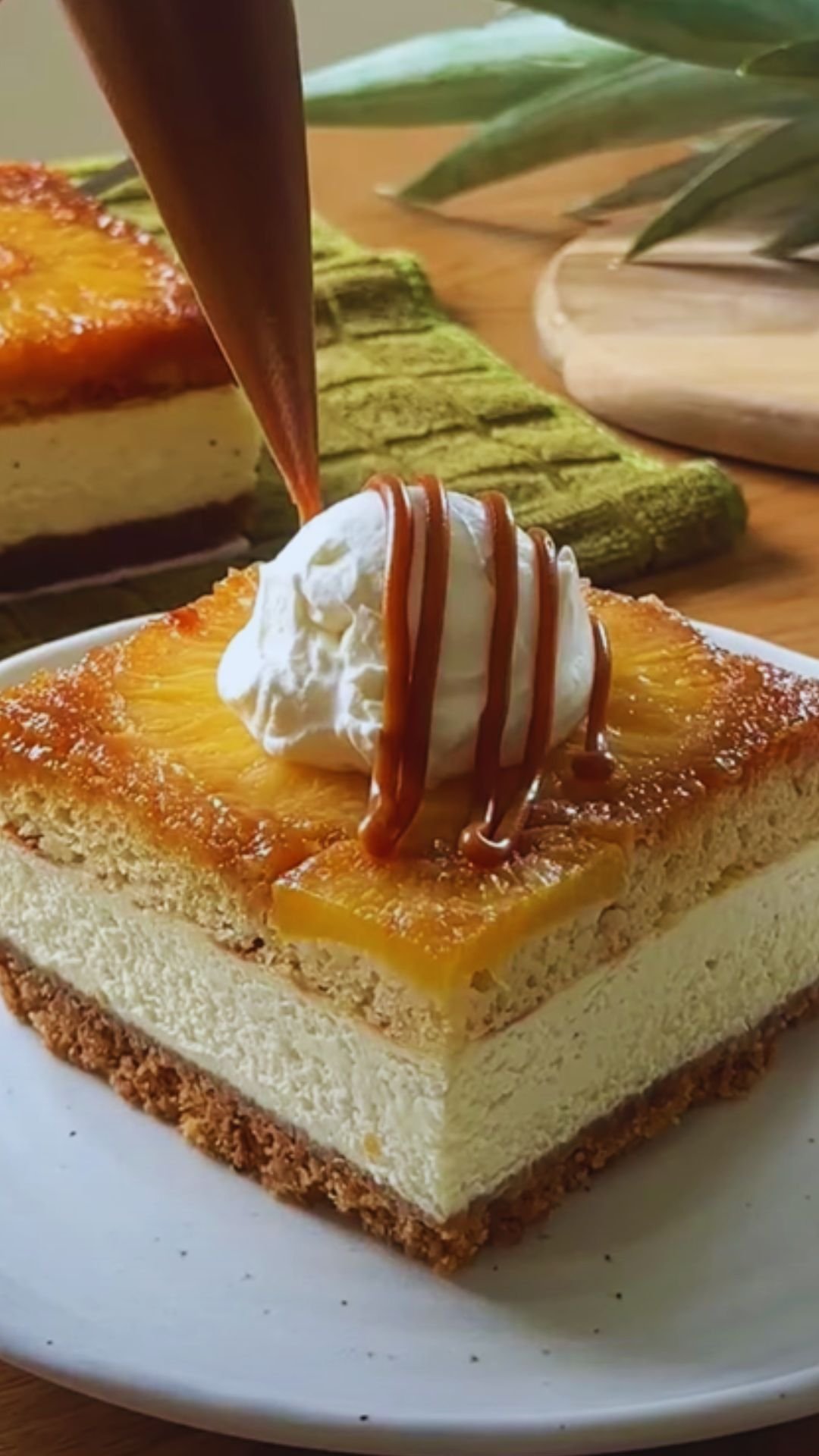Have you ever tasted something so divine that it transported you to another world entirely? That’s precisely what happened the first time I sampled these exquisite Dubai Chocolate Balls with Pistachio Kunefe Filling. As someone who’s traversed the culinary landscapes of the Middle East for over a decade, I can confidently say this dessert stands as a testament to the region’s ingenious ability to blend traditional flavors with contemporary techniques.
These delectable treats combine the rich, velvety smoothness of premium chocolate with the distinctive sweet, cheesy crunch of kunefe—a traditional Middle Eastern pastry—and the nutty elegance of pistachios. The result? A sophisticated confection that pays homage to Dubai’s status as a melting pot of cultures and cuisines.
The Cultural Significance
Before diving into the recipe, I think it’s important to appreciate the cultural tapestry from which this dessert emerges. Dubai, with its gleaming skyscrapers and ultramodern lifestyle, still maintains deep connections to traditional Emirati and broader Middle Eastern culinary heritage.
Kunefe itself has ancient roots, believed to have originated in the Levant region during the Ottoman Empire. Traditionally, it consists of shredded phyllo dough or semolina dough, soaked in sweet syrup and layered with cheese. The addition of pistachios—a treasured ingredient across the Middle East—elevates this classic dish even further.
By encasing this traditional filling in a chocolate shell, we create a perfect metaphor for Dubai itself: traditional heart wrapped in contemporary luxury.
Key Ingredients: A Guide to Quality Selection
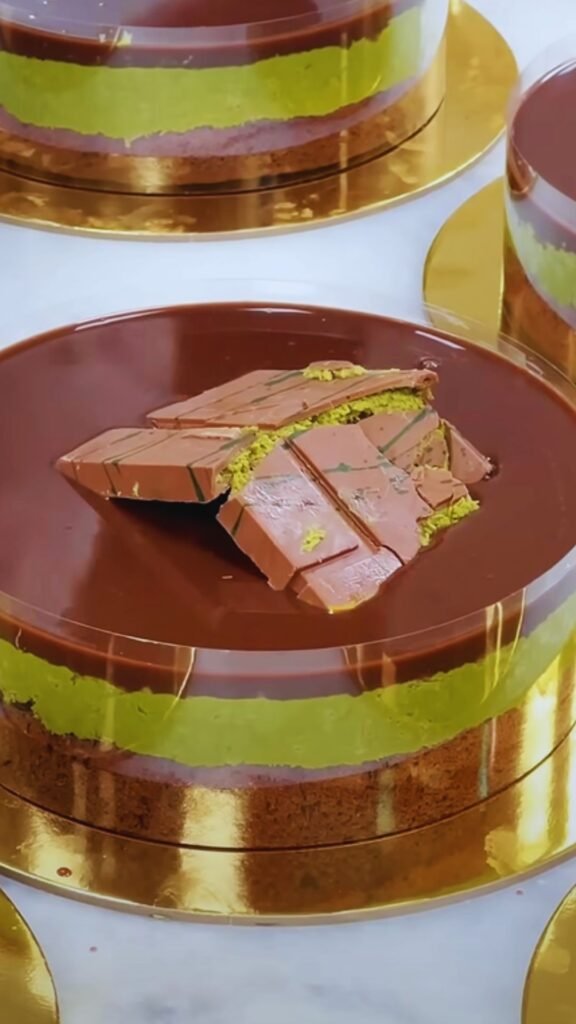
The magic of these chocolate balls lies in the quality of ingredients used. Here’s my guide to selecting the best components:
- Chocolate: Use high-quality dark chocolate with at least 70% cocoa content for the outer shell. Look for single-origin varieties from places like Ecuador or Madagascar for complex flavor profiles.
- Kadaifi Pastry: These fine vermicelli-like pastry threads are essential for authentic kunefe texture. Find them in Middle Eastern grocery stores or specialty food shops.
- Cheese: Traditional kunefe uses a stretchy, unsalted cheese like Akkawi or Nabulsi. If these are unavailable, a mixture of mozzarella and ricotta makes an excellent substitute.
- Pistachios: Opt for raw, unsalted pistachios from Iran or Turkey if possible. Their vibrant green color and distinctive flavor are unmatched.
- Rose Water: A tiny amount adds an authentic Middle Eastern floral note. Always choose food-grade rose water.
- Orange Blossom Water: This provides a subtle citrus fragrance that complements the cheese filling beautifully.
Equipment You’ll Need
Before starting, make sure you have these tools on hand:
- Food processor or grinder for pistachios
- Double boiler for melting chocolate
- Silicone molds (round, approximately 1.5 inches in diameter)
- Fine-mesh strainer
- Candy thermometer
- Small offset spatula
- Pastry brush
- Refrigerator with adequate space
The Complete Recipe
For the Kunefe Filling:
- 250g kadaifi pastry
- 150g unsalted Akkawi cheese (or 100g mozzarella mixed with 50g ricotta)
- 100g shelled pistachios, plus extra for garnish
- 80g unsalted butter, melted
- 80g sugar
- 2 tbsp rose water
- 1 tbsp orange blossom water
- 1 tsp ground cardamom
- Pinch of saffron threads, soaked in 1 tbsp warm water (optional)
For the Sugar Syrup:
- 150g sugar
- 100ml water
- 1 tsp lemon juice
- 1 tsp rose water
For the Chocolate Shell:
- 400g high-quality dark chocolate (70% cocoa)
- 50g cocoa butter or vegetable shortening
- 1 tbsp neutral oil (such as grapeseed)
For the Garnish:
- 50g ground pistachios
- Edible gold dust (optional)
- Dried rose petals, crushed (optional)
Method: Step-by-Step Instructions
Step 1: Prepare the Kunefe Filling
- Preheat your oven to 180°C (350°F).
- Finely chop the kadaifi pastry strands into small pieces (about 1cm long).
- In a large bowl, combine the chopped kadaifi with melted butter, ensuring every strand is coated.
- Grate or finely chop the cheese.
- In a food processor, pulse 100g pistachios until finely ground but not pasty.
- In a small bowl, mix the ground pistachios with cardamom and saffron water (if using).
- In a baking dish (approximately 20×20 cm), spread half of the buttered kadaifi.
- Layer the grated cheese evenly on top.
- Sprinkle the pistachio mixture over the cheese.
- Cover with the remaining kadaifi, pressing gently to compact.
- Bake for 25-30 minutes until golden brown and crispy.
Step 2: Prepare the Sugar Syrup
- While the kunefe is baking, combine sugar, water, and lemon juice in a small saucepan.
- Bring to a boil, then reduce heat and simmer for about 5 minutes until slightly thickened.
- Remove from heat and stir in the rose water.
- Let cool slightly.
Step 3: Finish the Kunefe
- When the kunefe is golden and crisp, remove from the oven.
- Immediately pour the warm (not hot) syrup evenly over the hot kunefe.
- Allow to cool completely, then refrigerate for at least 2 hours or overnight.
- Once chilled, crumble the kunefe into small pieces and mix with the orange blossom water.
- Form into small balls (about 2cm in diameter) and place on a parchment-lined tray.
- Freeze for at least 2 hours until very firm.
Step 4: Prepare the Chocolate Shell
- Chop the chocolate into small, even pieces.
- In a heatproof bowl set over simmering water (not touching), melt the chocolate with cocoa butter and oil.
- Stir occasionally until completely smooth.
- Remove from heat and let cool until just warm to the touch (about 35°C or 95°F).
Step 5: Assemble the Chocolate Balls
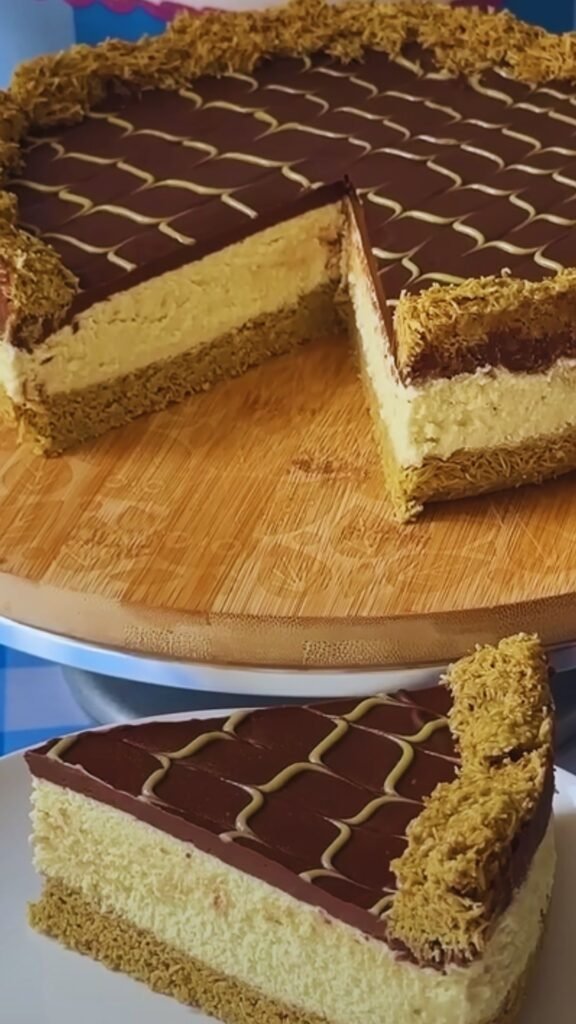
- Remove kunefe balls from the freezer.
- Using a fork or chocolate dipping tool, dip each frozen ball into the melted chocolate.
- Allow excess to drip off, then place on a parchment-lined tray.
- Before the chocolate sets, sprinkle with ground pistachios.
- If using, dust lightly with edible gold and rose petals.
- Allow to set at room temperature for about 30 minutes.
- For a perfect finish, dip a second time and garnish again.
- Refrigerate for at least 1 hour before serving.
Nutritional Information
Below is a detailed nutritional breakdown per chocolate ball (approximate values based on a yield of 20 balls):
| Nutrient | Amount per Ball | % Daily Value* |
|---|---|---|
| Calories | 215 kcal | 11% |
| Total Fat | 14g | 18% |
| – Saturated Fat | 7g | 35% |
| – Trans Fat | 0g | – |
| – Unsaturated Fat | 7g | – |
| Cholesterol | 15mg | 5% |
| Sodium | 45mg | 2% |
| Total Carbohydrates | 18g | 7% |
| – Dietary Fiber | 2g | 7% |
| – Sugars | 14g | – |
| Protein | 4g | 8% |
| Calcium | 60mg | 5% |
| Iron | 1.2mg | 7% |
| Potassium | 120mg | 3% |
| Vitamin A | 50IU | 1% |
| Vitamin C | 0mg | 0% |
*Percent Daily Values are based on a 2,000 calorie diet. Your daily values may be higher or lower depending on your calorie needs.
Storage and Shelf Life
These chocolate balls can be stored in several ways, depending on when you plan to serve them:
| Storage Method | Temperature | Shelf Life | Notes |
|---|---|---|---|
| Refrigerator | 4°C (39°F) | 1 week | Store in airtight container |
| Freezer | -18°C (0°F) | 2 months | Thaw in refrigerator for 2 hours before serving |
| Room temperature | Below 20°C (68°F) | 2-3 days | Only if room is cool and dry |
| Gift box | Cool, dry place | 4-5 days | Layer between parchment paper |
Serving Suggestions
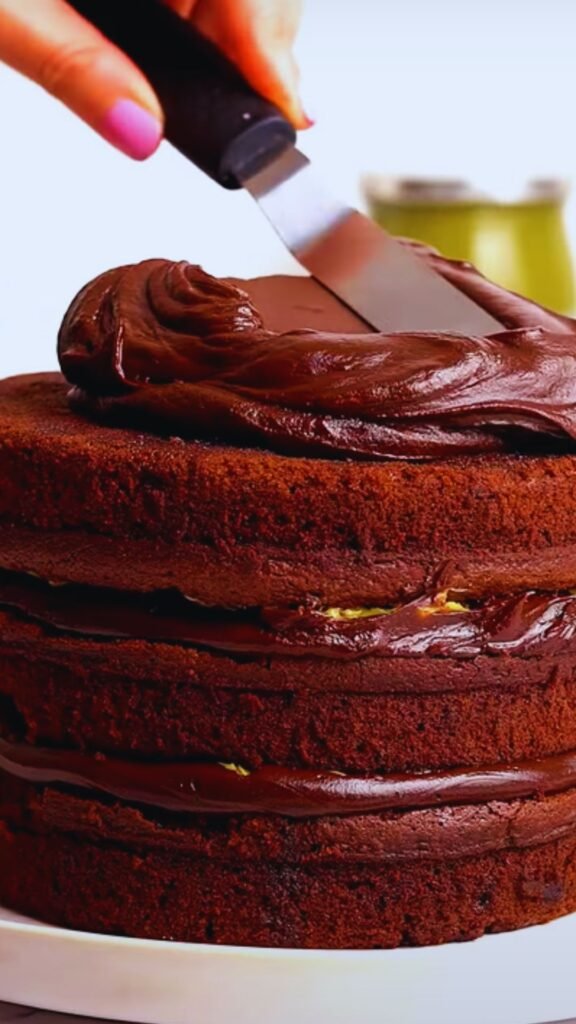
These exquisite treats deserve to be presented with equal elegance. Here are my favorite ways to serve them:
- Traditional Middle Eastern Style: Arrange on a decorative silver or brass platter alongside small cups of Turkish coffee or Arabic coffee with cardamom.
- Modern Dessert Plate: Place three chocolate balls on a white porcelain plate with a small quenelle of clotted cream and a drizzle of honey infused with saffron.
- Afternoon Tea: Serve alongside a selection of baklava and other petit fours with mint tea.
- Dessert Board: Create an impressive dessert board with the chocolate balls as the centerpiece, surrounded by dried fruits, fresh figs, date syrup for dipping, and fresh berries.
- Celebratory Tower: For special occasions, arrange in a pyramid on a cake stand, dusted with additional gold powder and surrounded by fresh flowers.
Recommended beverages to accompany these chocolate balls include:
- Turkish coffee
- Cardamom tea
- Rose-infused hot chocolate
- Sparkling water with a splash of pomegranate juice
- Camel milk (for an authentic Emirati experience)
Troubleshooting Common Issues
Even experienced chefs encounter challenges. Here are solutions to potential problems:
| Issue | Possible Cause | Solution |
|---|---|---|
| Chocolate seizing | Water contact or overheating | Start over with new chocolate; ensure all utensils are completely dry |
| Filling too soft | Insufficient refrigeration | Freeze for longer before dipping |
| Chocolate too thick for dipping | Temperature too low | Add a small amount of neutral oil and warm slightly |
| Grainy texture in filling | Sugar crystallization | Ensure syrup is completely mixed into warm kunefe |
| Chocolate shell cracking | Temperature shock | Allow balls to warm slightly before serving |
| Filling leaking | Thin spots in chocolate coating | Double-dip in chocolate or seal holes with additional chocolate |
Variations to Explore
The beauty of this recipe lies in its adaptability. Here are some exciting variations I’ve developed:
- Rosewater and Cardamom Intensified: Double the rosewater and cardamom for a more pronounced Middle Eastern flavor profile.
- Date-Infused: Add 50g of finely chopped Medjool dates to the kunefe filling for natural sweetness and complexity.
- Tahini Twist: Incorporate 2 tablespoons of tahini into the chocolate coating for a nutty undertone.
- Halva Center: Replace part of the kunefe with crumbled halva for a unique textural contrast.
- White Chocolate Version: Use white chocolate infused with saffron for the outer shell for a striking visual presentation.
- Vegan Adaptation: Substitute plant-based cheese alternatives and coconut oil instead of butter for a fully vegan version.
The History Behind the Innovation
This particular dessert represents a fascinating culinary evolution. Traditional kunefe, dating back centuries, has been reimagined countless times across the Middle East. However, its transformation into these chocolate-enrobed spheres is relatively recent—emerging from Dubai’s dynamic culinary scene in the early 2010s.
I first encountered a version of these chocolate balls at a high-end patisserie in Dubai’s Al Quoz creative district around 2015. The pastry chef explained how they were inspired by both European chocolate truffle techniques and the beloved local kunefe dessert. The addition of pistachios—treasured throughout the region for their vibrant color and flavor—was a natural evolution.
What makes this dessert particularly special is how it embodies Dubai’s essence: honoring tradition while fearlessly embracing innovation.
Sustainability Considerations
As food lovers, we have a responsibility to consider the environmental impact of our culinary choices. Here are some sustainability aspects to keep in mind:
- Chocolate: Look for Fair Trade certified options that ensure ethical treatment of cacao farmers.
- Pistachios: These require significant water resources. Consider purchasing from regions with more sustainable growing practices.
- Packaging: If gifting these treats, use biodegradable or reusable packaging.
- Food Waste: Leftover kadaifi and chocolate can be repurposed into other desserts.
Questions and Answers
Q: Can I make these chocolate balls in advance for a party?
Absolutely! These chocolate balls actually benefit from being made 1-2 days in advance. The flavors meld beautifully, and the texture stabilizes. Just store them in the refrigerator in an airtight container, and bring them to room temperature about 15-20 minutes before serving.
Q: I can’t find kadaifi pastry. What can I substitute?
If kadaifi (kataifi) is unavailable, you can use very finely shredded phyllo dough as a substitute. Simply stack 4-5 sheets of phyllo, roll them tightly, and use a sharp knife to cut them into very thin shreds. Alternatively, vermicelli noodles broken into small pieces and toasted can provide a similar texture, though the flavor profile will be different.
Q: Is there a dairy-free alternative for the cheese filling?
Yes! You can make a delicious dairy-free version using a combination of firm tofu (200g) blended with 2 tablespoons of nutritional yeast, 1 tablespoon of lemon juice, and 2 tablespoons of coconut cream. This mixture provides a similar creaminess and tang to the traditional cheese while remaining completely plant-based.
Q: How can I prevent the chocolate from blooming (developing white streaks)?
Chocolate bloom occurs when cocoa butter separates from the chocolate and rises to the surface. To prevent this, ensure your chocolate is properly tempered by carefully controlling the temperature during melting and cooling. Additionally, store the finished chocolate balls in a cool, dry place with stable temperature—avoid moving them between very different temperature environments.
Q: Can I reduce the sugar content while maintaining the authentic taste?
You can reduce the sugar in the syrup by about 25% without significantly impacting the authentic taste. Another option is to use date syrup in place of some of the sugar, which provides sweetness but also adds nutritional value and a complex flavor that complements the pistachios beautifully. Start by replacing half the sugar with an equal amount of date syrup.
Q: What’s the best way to transport these for a potluck or party?
For transporting, place the chocolate balls in a single layer in a shallow container with a tight-fitting lid. If you need to stack them, place parchment paper between layers. Keep the container in a cooler with ice packs, but not directly touching the ice packs—you want them cool but not cold. Upon arrival, let them sit at room temperature for 15-20 minutes before serving for the best flavor and texture experience.
Q: Can I use milk chocolate instead of dark chocolate?
While you can certainly use milk chocolate, keep in mind it will make the overall dessert significantly sweeter. If using milk chocolate, I recommend reducing the sugar in the kunefe filling by about 20% to balance the flavors. You may also need to adjust the amount of cocoa butter to achieve the right consistency for the chocolate shell.
Q: How do I know if my kunefe is cooked properly?
Perfectly cooked kunefe should have a golden-brown, crispy top while remaining slightly chewy inside. The cheese should be completely melted. If you’re uncertain, insert a knife into the center—it should come out clean with no raw pastry threads, and you should see melted cheese when you pull it apart gently.
Final Thoughts
Creating these Dubai Chocolate Balls with Pistachio Kunefe Filling may require some time and patience, but the result is a truly memorable dessert that bridges cultures and traditions. There’s something profoundly satisfying about crafting a treat that honors culinary heritage while embracing contemporary techniques.
I encourage you to approach this recipe with a spirit of adventure. Don’t be intimidated by the multiple steps—each one builds flavor and contributes to the final masterpiece. And remember, even if your first attempt isn’t picture-perfect, the flavors will still be divine.
These chocolate balls represent the very best of fusion cuisine—thoughtful, respectful of traditions, yet unafraid to innovate. They’re a conversation starter, a cultural ambassador, and most importantly, an absolutely delicious indulgence that will leave your guests asking for the recipe.
Happy cooking, and may your kitchen be filled with the intoxicating aromas of chocolate, pistachios, and the sweet essence of the Middle East!
